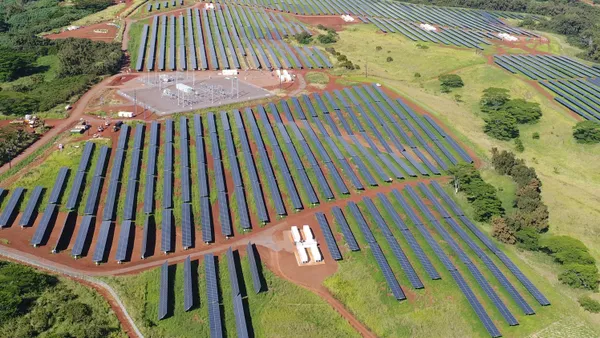It wasn’t long ago that utilities feared the breakneck growth of large-scale solar.
In the early 2000s, many utilities expressed concern about the intermittent nature of solar generation, worried that fluctuating output from solar farms could stress their systems, creating voltage problems on the grid and enhancing wear on conventional power plants.
Fast forward a few years, and utilities are not only handling unprecedented levels of solar penetration, but are clamoring for more. In 2016, U.S. utilities added more solar than any other resource, and average utility-scale prices dropped below $1/watt this year, fueling even more demand.
Solar’s growth has not erased integration problems — utilities are still dealing with the infamous “duck curve” created in high-solar jurisdictions. But power companies and grid operators are getting better at handling the resource. New software systems, updated grid and generation infrastructure, and the addition of new technologies like smart inverters and storage are helping utilities embrace the large-scale solar boom nationwide.
How exactly are they doing it? That’s the focus of this Spotlight edition on utility-scale solar integration.
-
California utilities finding their way on renewables integration
High levels of renewables can make utilities look good, but also strain their systems, with potential solutions requiring vetting by regulators. Read More >>
-
California solar pilot shows how renewables can provide grid services
A utility-scale solar pilot project demonstrated how solar can compete with natural gas over grid services and cost. Read More >>
-
How utility pilot programs are driving renewable energy integration
SCE and APS want to use electric vehicles, water heaters and demand response to help add more wind and solar to the grid. Read More >>
-
An inside look at using energy storage to integrate renewable resources
Soaking up solar power during the day and dispatching it in the evening is often cited as a renewable-enabling use for energy storage, but in practice it's often not so simple. Read More >>
-
Prognosis negative: How California is dealing with below-zero power market prices
A rainy winter and growing solar have CAISO prices going negative and renewable energy going to waste — what should policymakers do? Read More >>
-
Pressed duck: Clipping the curve with energy storage
Building on Arizona's cheap solar-plus-storage PPA could present a new way to mitigate the duck curve, but the utility that signed it is skeptical. Read More >>
-
AAs gas plants struggle, California seeks new flexible capacity strategies
With up to 6 GW of gas plants at risk of closure in the coming years, energy stakeholders are scrambling for new compensation techniques and zero-carbon alternatives. Read More >>
-
An embarrassment of riches? Maui shows why renewables curtailment isn't all bad
While it's something to minimize, curtailment is crucial to the functioning of MECO's grid today, and the goal of reaching 100% renewables by 2045. Read More >>














